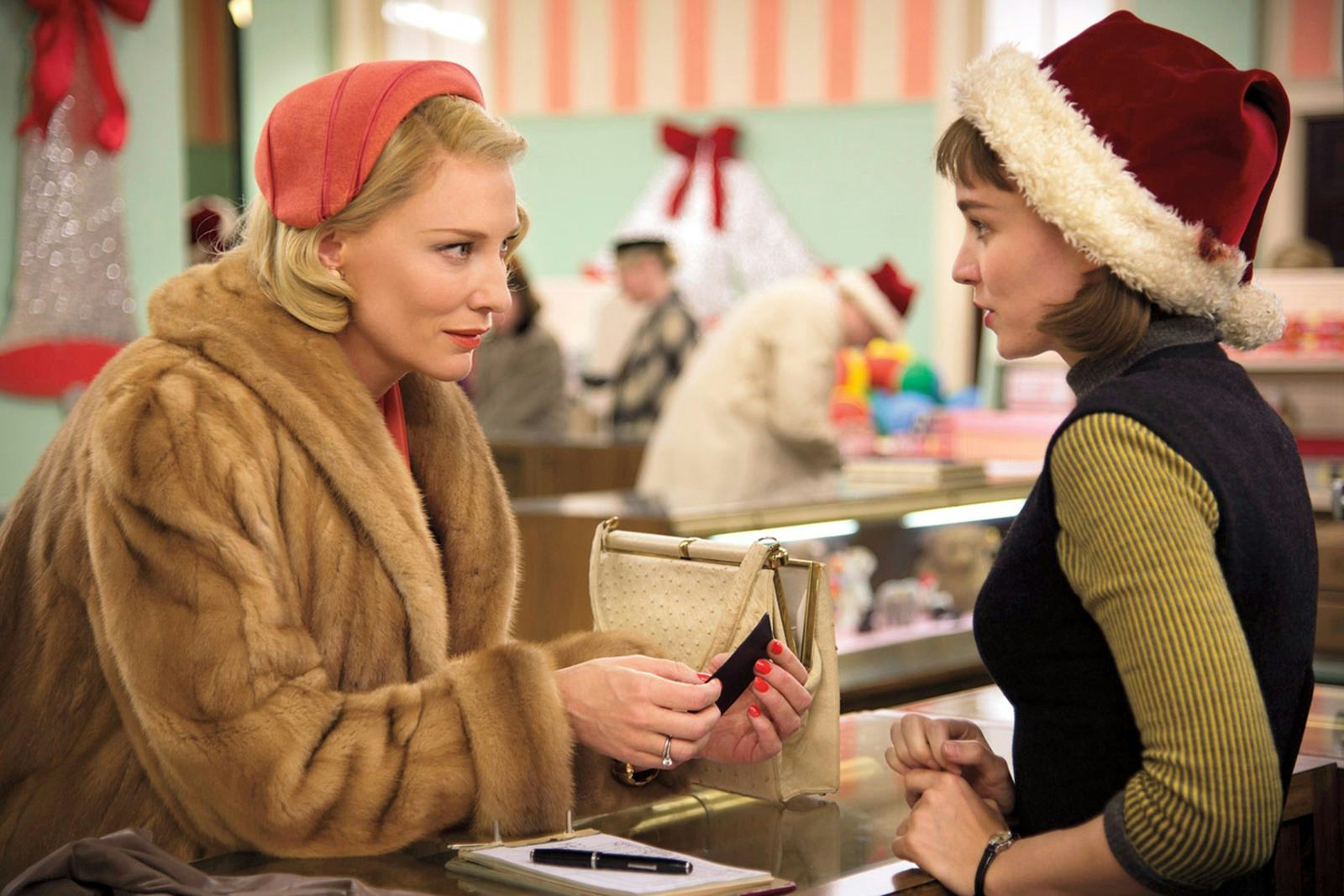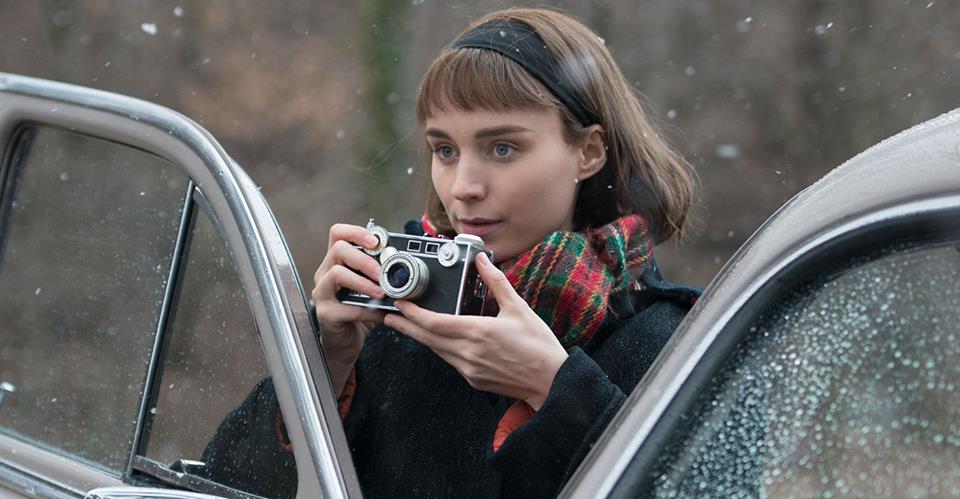By Christian Eltell
Critic Rating: 4/4 Stars

Todd Hayes’s Carol is one of the most seductive and refreshing love stories ever filmed. Many of the images in this picture look like art coming to life. As the start credits appear, the camera displays a continuous shot of an elegant New York street in the 1950s. The camera reveals a New York evening with old vehicles, well dressed people crossing the street, and a gentleman named Jack walking into a fancy restaurant with revolving doors. The first cut occurs when Jack is inside the restaurant, where he buys a couple of drinks and greets the bartender. Jack is surprised when he sees a beautiful woman he recognizes, Therese Belivet, with another, even more elegant woman named Carol Aird. The opening not only gives us a glimpse of the wonderful New York nightlife in the 1950s, but also introduces us to two women sitting alone together in public, which wasn’t very common during this time.

Carol is a film adaptation of Patricia Highsmith’s 1952 novel, The Price of Salt, which is about a lesbian romance. In Hayes’s film, Therese Belivet is a sales clerk who enjoys setting up and watching toy train sets in motion more than her actual job. Belivet really wants to be a photographer. Moving trains and photography are Therese’s forms of escapism, in order to get her mind out of ordinary life. She hangs out with male friends she admires, but isn’t intimate with any of them, even if a couple of guys try to get her attention. While Therese is a lower class working woman, Carol Aird is a rich married woman with one daughter. However, Carol’s love is mainly towards other single women.
When Carol and Therese first lay eyes on each other, it seems like love at first sight. Both women look at each other with curiosity and desire. One gets the feeling they would like to know each other, even though we know Carol is wealthier than Therese. However, the reason they become interested in each other is because both women are different from everyone else, and want to live outside the ordinary. When Carol first encounters Therese, she asks her if a special doll is available for her daughter. Therese tells her the doll is out of stock. Carol responds by asking her what her favorite doll was to play with as a child. Therese tells Carol she played with train sets, not dolls. This surprises Carol, and Therese convinces her to buy a train set for her daughter at a nice offer and free delivery, instead of getting a regular doll. Carol agrees, causing Therese to freeze with shock and admiration. Carol also tells Therese that it’s refreshing to see a young woman reading a book. Carol and Therese talk to each other with kindness and respect that no one would want their conversation to end.

The best parts of the film are the interactions between Carol and Therese, two very different women that share a mutual attraction for each other. Carol is wealthy, and Therese is a part of the working middle class, but both women don’t care about each other’s economic status or age difference. Carol and Therese both want to live freely and love each other. This is shown when they take a road trip, stay in luxurious hotel rooms, eat together, and make love. Due to Therese’s interest in photography, Carol gives her a brand new camera to take nice shots and photos that she can look back on, including pictures of Carol by herself. They also admire each other’s homes: Carol in her big family house in Jersey, and Therese in her small apartment.
The saddest part about Carol is that the relationship between these two women cannot remain a secret forever. Everyone becomes suspicious about Carol and Therese’s private romance. Carol’s husband, Harge, has her and Therese followed by a private detective during their road trip. Harge unsuccessfully tried to get Carol to spend Christmas vacation with him, but since he’s had enough of her private affairs, he wants sole custody of their daughter. Therese’s roommate, Richard, mentions how he’s always loved her, but she tells him that they never had any chemistry, but that she’s always appreciated him as a friend. Cate Blanchett as Carol, and Rooney Mara as Therese, each display a great amount of subtle emotion, rather than going over the top. They both also have good chemistry together, especially in their intimate moments when they talk, kiss, and stare at each other. The camera provides effective close-up shots of Carol and Therese, as well as clear shots from windows and car doors. Carol is a prime example of a film adaptation that successfully displays the endless possibilities of love, especially a lesbian romance. This picture shows that, during the 1950s, many people found same-sex relationships cruel and unethical. However, Hayes reveals, with vibrant visuals and powerful performances, that two women can love each other anywhere when they feel a true connection.
